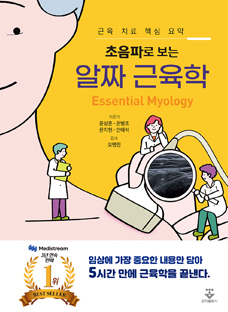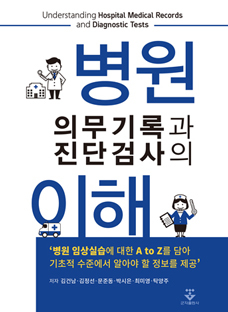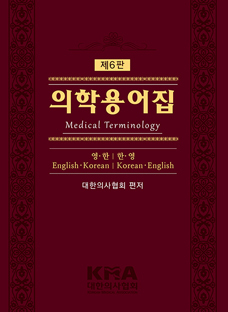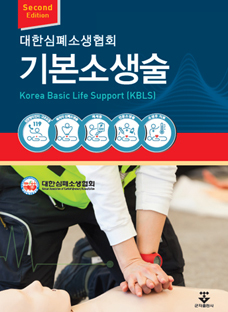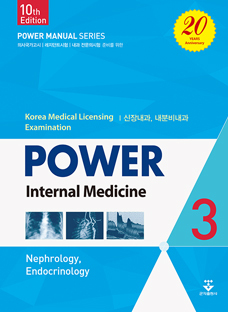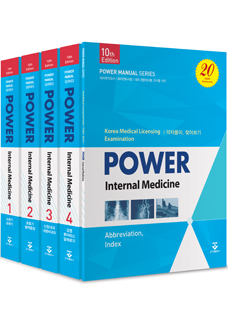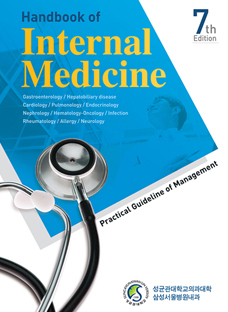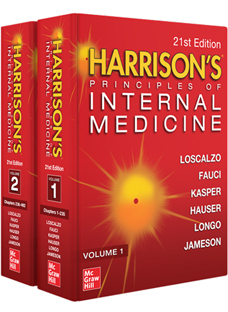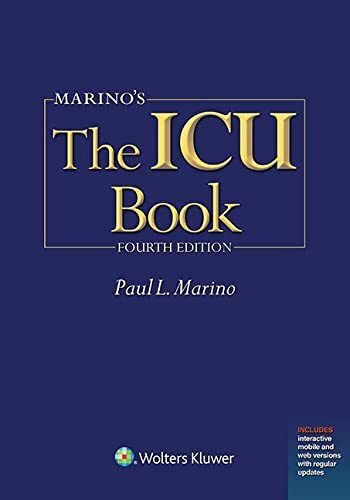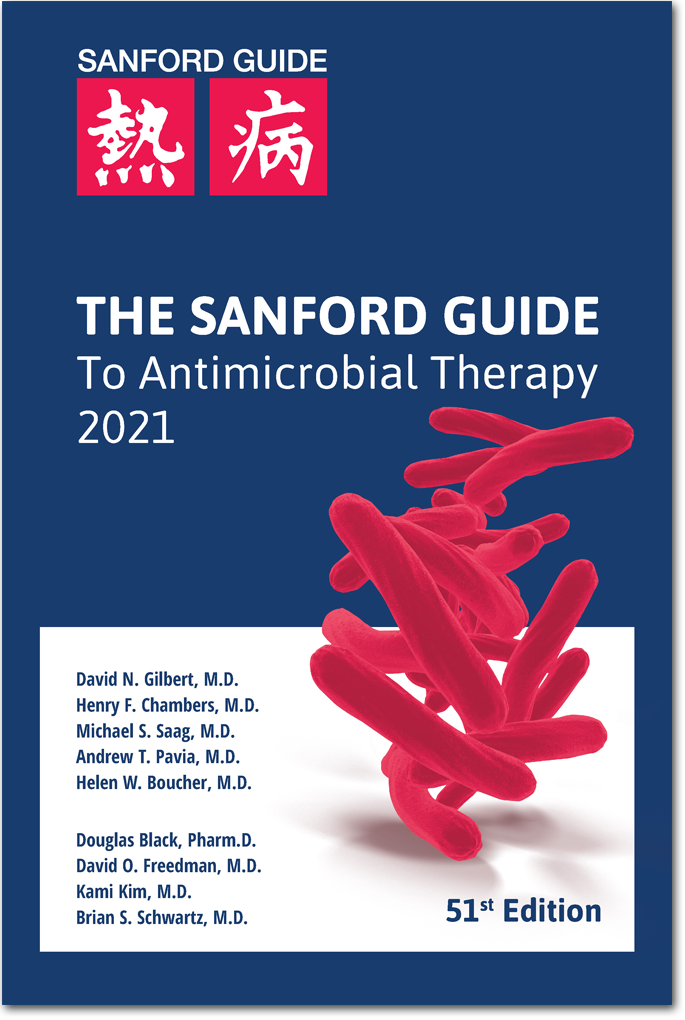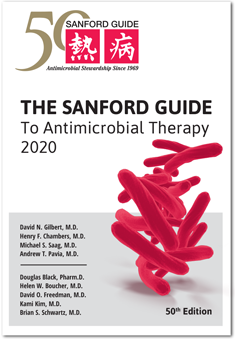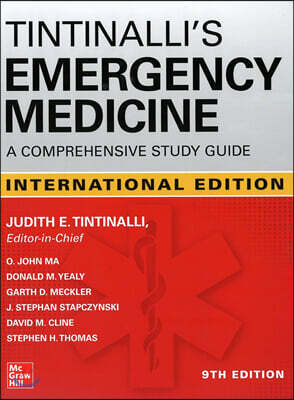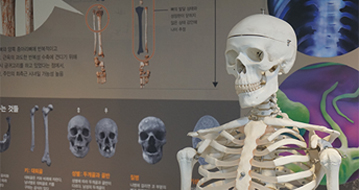Part I Basic Principles in the Diagnosis and Management of Infectious Diseases
Section A. Microbial Pathogenesis
1. A Molecular Perspective of Microbial Pathogenicity
2. Microbiome of Local Sites and their Unique Biology
3. Prebiotics, Probiotics and Synbiotics
Section B. Host Defense Mechanisms
4. Innate (General or Nospecific) Host Defense Mechanisms
5. Adaptive Immunity: Antibodies and Immunodefiencies
6. Mucosal Immunity
7. Granulocytic Phagocytes and Deficiency States
8. Complement and Deficiencies
9. Human Genetics and Infection
10. Nutrition, Immunity, and Infection
11. Evaluation of the Patient with Suspected Immunodeficiency and Other Host Defense Defects
Section C. Epidemiology of Infectious Disease
12. Epidemiologic Principles
13. Emerging and Reemerging Infectious Disease Threat
14. Bioterrorism: An Overview
Section D. Clinical Microbiology
15. The Clinician and the Microbiology Laboratory
Section E. Anti-Infective Therapy
16. Principles of Anti-infective Therapy
17. Molecular Mechanisms of Antibiotic Resistance in Bacteria
18. Pharmacokinetics and Pharmacodynamics of Anti-infective Agents
19. Penicillins
20. Cephalosporins
21. Other ß-Lactam Antibiotics
22. Antibiotic Allergy
23. Fusidic Acid
24. Aminoglycosides
25. Tetracyclines and Chloramphenicol
26. Rifamycins
27. Metronidazole
28. Macrolides, Clindamycin, and Ketolides
29. Glycopeptides (Vancomycin and Teicoplanin), Streptogramins (Quinupristin-Dalfopristin), and Lipopeptides (Daptomycin)
30. Polymyxins (Polymyxin B and Colistin)
31. Oxazolidinones
32. Sulfonamides and Trimethoprim
33. Quinolones
34. Unique Antibacterial Agents
35. Urinary Tract Agents: Nitrofurantoin and Methenamine
36. Topical Antibacterials
37. Antimycobacterial Agents
38. Drugs Active Against Fungi, Pneumocystis and Microsporidia
39. Drugs for Malaria
40. Drugs for Parasites Other Than Malaria
41. Drugs for Helminths
42. Antiviral Drugs General Principles
43. Antivirals Against Influenza and Other Respiratory Viruses
44. Antivirals Against Herpes Viruses
45. Antivirals Against Hepatitis Viruses
46. Other Antiviral Drugs
47. Immunomodulators
48. Hyperbaric Oxygen
49. Complementary and Alternative Medicines for Infectious Diseases
50. Antimicrobial Management: Cost and Resistance
51. Interpretation of Clinical Trials of Antimicrobial Agents
52. Outpatient Parenteral Antimicrobial Therapy
53. Tables of Antimicrobial Agent Pharmacology
Part II Major Clinical Syndromes
Section A. Fever
54. Temperature Regulation and the Pathogenesis of Fever
55. Fever of Unknown Origin
56. The Acutely Ill Patient with Fever and Rash
Section B. Upper Respiratory Tract Infections
57. The Common Cold
58. Pharyngitis
59. Acute Laryngitis
60. Acute Laryngotracheobronchitis (Croup)
61. Otitis Externa, Otitis Media, and Mastoiditis
62. Sinusitis
63. Epiglottitis
64. Infections of the Oral Cavity, Neck, and Head
Section C. Pleuropulmonary and Bronchial Infections
65. Acute Bronchitis
66. Chronic Obstructive Pulmonary Disease, Chronic Bronchitis, and Acute Exacerbations
67. Bronchiolitis
68. Acute Pneumonia
69. Empyema and Pleural Effusion
70. Lung Abscess
71. Chronic Pneumonia
72. Cystic Fibrosis
Section D. Urinary Tract Infections
73. Urinary Tract Infections
Section E. Sepsis
74. Sepsis, Severe Sepsis, and Septic Shock
Section F. Intra-Abdominal Infection
75. Peritonitis and Intraperitoneal Abscesses
76. Infections of the Liver and Biliary System
77. Pancreatic Infections
78. Splenic Abscess
79. Appendicitis
80. Diverticulitis and Typhlitis
Section G. Cardiovascular Infections
81. Endocarditis and Intravascular Infections
82. Prosthetic Valve Endocarditis
83. Infections of Non-Valvular Cardiovascular Devices
84. Prophylaxis of Infective Endocarditis
85. Myocarditis and Pericarditis
86. Mediastinitis
Section H. Central Nervous System Infections
87. Approach to the Patient with Central Nervous System Infection
88. Acute Meningitis
89. Chronic Meningitis
90. Encephalitis, Myelitis, and Neuritis
91. Brain Abscess
92. Subdural Empyema, Epidural Abscess, and Intracranial Suppurative Thrombophlebitis
93. Cerebrospinal fluid shunt infections
Section I. Skin and Soft Tissue Infections
94. Cellulitis, Necrotizing Fasciitis and Subcutaneous Tissue Infections
95. Myositis
96. Lymphadenitis and Lymphangitis
Section J. Gastrointestinal Infections and Food Poisoning
97. Principles and Syndromes of Enteric Infection
98. Esophagitis
99. Nausea, Vomiting, and Noninflammatory Diarrhea
100. Inflammatory Enteritides
101. Enteric Fever and Other Causes of Abdominal Symptoms with Fever
102. Food Poisoning
103. Tropical Sprue/Enteropathy
Section K. Bone and Joint Infections
104. Infectious Arthritis
105. Osteomyelitis
106. Orthopedic Implant Infections
Section L. Diseases of the Reproductive Organs and Sexually Transmitted Diseases
107. Genital Skin and Mucous Membrane Lesions
108. Urethritis
109. Vulvovaginitis and Cervicitis
110. Infections of the Female Pelvis
111. Prostatitis, Epididymitis, and Orchitis
Section M. Eye Infections
112. Introduction to Ocular Infections
113. Microbial Conjunctivitis
114. Microbial Keratitis
115. Endophthalmitis
116. Infectious Causes of Uveitis
117. Periocular Infections
Section N. Hepatitis
118. Hepatitis
Section O. Acquired Immunodeficiency Syndrome
119. Global Perspectives on Human Immunodeficiency Virus Infection and Acquired Immunodeficiency Syndrome
120. Epidemiology and Prevention of Acquired Immunodeficiency Syndrome and Human Immunodeficiency Virus Infection
121. Diagnosis of Human Immunodeficiency Virus Infection
122. The Immunology of Human Immunodeficiency Virus Infection
123. General Clinical Manifestations of Human Immunodeficiency Virus Infection (Including the Acute Retroviral Syndrome and Oral, Cutaneous, Renal, Ocular, Metabolic and Cardiac Diseases)
124. Pulmonary Manifestations of Human Immunodeficiency Virus Infection
125. Gastrointestinal and Hepatobiliary Manifestations of Human Immunodeficiency Virus Infection
126. Neurologic Diseases Caused by Human Immunodeficiency Virus-1 and Opportunistic Infections
127. Human Immunodeficiency Virus Infection in Women
128. Pediatric Human Immunodeficiency Virus Infection
129. Antiretroviral Therapy for Human Immunodeficiency Virus Infection
130. Management of Opportunistic Infections Associated with Human Immunodeficiency Virus Infection
131. Vaccines for Human Immunodeficiency Virus-1 Infection
Section P. Miscellaneous Syndromes
132. Chronic Fatigue Syndrome
Part III Infectious Diseases and Their Etiologic Agents
Section A. Viral Diseases
133. Biology of Viruses and Viral Diseases
134. Orthopoxviruses: Vaccinia (Smallpox Vaccine), Variola (Smallpox), Monkeypox, and Cowpox
135. Other Poxviruses That Infect Humans: Parapoxviruses, Molluscum Contagiosum, and Tanapox
Section B. Herpesviridae
136. Introduction to Herpesviridae
137. Herpes Simplex Virus
138. Chickenpox and Herpes Zoster (Varicella-Zoster Virus)
139. Cytomegalovirus
140. Epstein-Barr Virus (Infectious Mononucleosis)
141. Human Herpesvirus Types 6 and 7
142. Kaposi's Sarcoma-Associated Herpesvirus (Human Herpesvirus Type 8)
143. Herpes B Virus
Section C. Adenoviridae
144. Adenovirus
Section D. Papovaviridae
145. Papillomaviruses
146. JC, BK, and Other Polyomaviruses; Progressive Multifocal Leukoencephalopathy Hepadnaviridae
147. Hepatitis B Virus and Hepatitis Delta Virus
Section E. Parvoviridae
148. Human Parvoviruses
149. Orthoreoviruses, Orbiviruses, Coltiviruses
150. Seadornaviruses (Colorado Tick Fever)
151. Rotaviruses
152. Alphaviruses, Including Chickungunya
153. Rubella Virus (German Measles)
PART IV. Flaviviruses
154. Flaviviruses (Yellow Fever, Dengue, Dengue Hemorrhagic Fever, Japanese Encephalitis, West Nile Encephalitis, St. Louis Encephalitis, Tick-Borne Encephalitis)
155. Hepatitis C
Section A. Coronaviridae
156. Coronaviruses, Including Severe Acute Respiratory Syndrome (SARS)-Associated Coronavirus
Section B. Paramyxoviridae
157. Parainfluenza Viruses
158. Mumps Virus
159. Respiratory Syncytial Virus
160. Human Metapneumovirus
161. Measles Virus (Rubeola)
162. Zoonotic Paramyxoviruses: Hendra, Nipah, and Menangle Viruses
Section C. Rhabdoviridae
163. Vesicular Stomatitis Virus and Related Viruses
164. Rabies (Rhabdoviruses)
Section D. Filoviridae
165. Marburg and Ebola Virus Hemorrhagic Fevers
Section E. Orthomyxoviridae
166. Influenza Viruses Including Avian Influenza
Section F. Bunyaviridae
167. California Encephalitis, Hantavirus Pulmonary Syndrome, and Bunyavirid Hemorrhagic Fevers
Section G. Arenaviridae
168. Lymphocytic Choriomeningitis Virus, Lassa Virus, and the South American Hemorrhagic Fevers
Section H. Retroviridae
169. Human T-Cell Lymphotropic Virus Types I and II
170. Human Immunodeficiency Viruses
Section I. Picornaviridae
171. Introduction to the Enteroviruses
172. Poliovirus
173. Coxsackieviruses, Echoviruses, and Newer Enteroviruses
174. Parechoviruses
175. Hepatitis A Virus
176. Rhinovirus
PART V. Caliciviridae and Other Gastrointestinal Viruses
177. Noroviruses and Other Caliciviruses
178. Astroviruses and Picobirnaviruses
Section A. Unclassified Viruses
179. Hepatitis E Virus
Section B. Prion Diseases
180. Prions and Prion Diseases of the Central Nervous System (Transmissible Neurodegenerative Diseases)
Section C. Chlamydial Diseases
181. Chlamydia trachomatis (Trachoma, Perinatal Infections, Lymphogranuloma Venereum, and Other Genital Infections)
182. Chlamydophila (Chlamydia) Psittaci (Psittacosis)
183. Chlamydia Pneumoniae
184. Mycoplasma Pneumoniae and Atypical Pneumonia
Section D. Mycoplasma Diseases
185. Genital Mycoplasmas: Mycoplasma genitalium, Mycoplasma hominis, and Ureaplasma Species
Section E. Rickettsioses, Ehrlichioses, and Anaplasmosis
186. Introduction to Rickettsioses, Ehrlichioses and Anaplasmosis
187. Rickettsia Rickettsii and Other Spotted Fever Group Rickettsiae (Rocky Mountain Spotted Fever and Other Spotted Fevers)
188. Rickettsia Akari (Rickettsialpox)
189. Coxiella Burnetii (Q Fever)
190. Rickettsia Prowazekii (Epidemic or Louse-Borne Typhus)
191. Rickettsia typhi (Murine Typhus)
192. Orientia Tsutsugamushi
193. Ehrlichia Chaffeensis and Ehrlichia Phagocytophila
Section F. Bacterial Diseases
194. Introduction to Bacteria and Bacterial Diseases
Section G. Gram-Positive Cocci
195. Staphylococcus aureus (Including Staphylococcal Toxic Shock)
196. Staphylococcus epidermidis and Other Coagulase-Negative Staphylococci
197. Classification of Streptococci
198. Streptococcus Pyogenes
199. Nonsuppurative Poststreptococcal Sequelae: Rheumatic Fever and Glomerulonephritis
200. Streptococcus pneumoniae
201. Enterococcus Species, Streptococcus bovis, and Leuconostoc Species
202. Streptococcus agalactiae (Group B Streptococcus)
203. Viridans Streptococci, Groups C and G Streptococci, and Gemella morbillorum
204. Streptococcus anginosus Group
Section H. Gram-Positive Bacilli
205. Corynebacterium diphtheriae
206. Corynebacteria other than Diphtheria and Rhodococcus
207. Listeria Monocytogenes
208. Bacillus Anthracis (Anthrax)
209. Bacillus Species and Other than Bacillus anthracis
210. Erysipelothrix Rhusiopathiae
211. Whipple's Disease
Section I. Gram-Negative Cocci
212. Neisseria Meningitidis
213. Neisseria Gonorrhoeae
214. Moraxella Catarrhalis and Other Gram-Negative Cocci
Section J. Gram-Negative Bacilli
215. Vibrio Cholerae
216. Other Pathogenic Vibrios
217. Campylobacter Jejuni and Related Species
218. Helicobacter Pylori and Other Gastric Helicobacter Species
219. Enterobacteriaceae
220. Pseudomonas Species, Including Ps. Aeruginosa
221. Stenotrophomonas Maltophilia and Burkholderia Cepacia Complex
222. Burkholderia Pseudomallei and Burkholderia Mallei
223. Acinetobacter Species
224. Salmonella Species, Including Salmonella Typhi
225. Shigella Species (Bacillary Dysentery)
226. Haemophilus Species (Incluing H. Influenzae and Chancroid)
227. Brucella Species
228. Francisella Tularensis (Tularemia)
229. Pasteurella Species
230. Yersinia Species, Including Plague
231. Bordetella Pertussis
232. Rat-Bite Fever Streptobacillus Moniliformis and Spirillum Minus
233. Legionella and Other Legionella Species
234. Capnocytophaga
235. Bartonella, Including Cat-Scratch Disease
236. Calymmatobacterium Granulomatis (Donovanosis, Granuloma Inguinale)
237. Other Gram-Negative and Gram-Variable Bacilli
Section K. Spirochetes
238. Treponema pallidum (Syphilis)
239. Endemic Treponematoses
240. Leptospira Species (leptospirosis)
241. Relapsing Fevers Due to Borrelia Species
242. Borrelia burgdorferi (Lyme Disease, Lyme Borreliosis)
Section L. Anaerobic Bacteria
243. Anaerobic Infections: General Concepts
244. Clostridium Difficile
245. Clostridium Tetani (Tetanus)
246. Clostridium Botulinum (Botulism)
247. Gas Gangrene and Other Clostridium-Associated Diseases
248. Bacteroides, Prevotella, Porphyromonas, and Fusobacterium Species (and Other Medically Important Anaerobic Gram-Negative Bacilli)
249. Anaerobic Cocci and Anaerobic Gram-Positive Non-sporulating Bacilli
Section M. Mycobacterial Diseases
250. Mycobacterium Tuberculosis
251. Mycobacterium Leprae
252. Mycobacterium Avium-Intracellulare
253. Nontuberculous Mycobacteria Other Than M. Avium-Intracellulare Complex
Section N. Higher Bacterial Diseases
254. Nocardia Species
255. Agents of Actinomycosis
Section O. Mycoses
256. Introduction to Mycoses
257. Candida Species
258. Aspergillus Species
259. Agents of Mucormycosis
260. Sporothrix schenckii
261. Agents of Chromomycosis
262. Agents of Mycetoma
263. Cryptococcus neoformans
264. Histoplasma capsulatum
265. Blastomyces dermatitidis
266. Coccidioides Species
267. Dermatophytosis and Other Superficial Mycoses
268. Paracoccidioides brasiliensis
269. Uncommon Fungi and Prototheca
270. Pneumocystis
271. Microsporidiosis
Section H. Protozoal Diseases
272. Introduction to Protozoal Diseases
273. Entamoeba species including amoebiasis
274. Free-Living Amebas
275. Plasmodium Species (Malaria)
276. Leishmania Species: Visceral (Kala-Azar), Cutaneous, and Mucocutaneous Leishmaniasis
277. Biology of Trypanosoma Species (American Trypanosomiasis, Chagas' Disease): Biology of Trypanosomes
278. Agents of African Trypanosomiasis (Sleeping Sickness)
279. Toxoplasma gondii
280. Giardia lamblia
281. Trichomonas vaginalis
282. Babesia Species
283. Cryptosporidium Species
284. Isospora belli, Sarcocystis Species, Blastocystis hominis and Cyclospora
Section I. Diseases Due to Toxic Algae
285. Human Illness Associated with Harmful Algal Blooms
John Glenn Morris Jr.
Section J. Diseases Due to Helminths
286. Introduction to Helminth Infections
287. Intestinal Nematodes (Roundworms)
288. Tissue Nematodes, Including Trichinosis, Dracunculiasis, and the Filariases
289. Trematodes (Schistosomes and Other Flukes)
290. Cestodes (Tapeworms)
291. Visceral Larva Migrans and Other Unusual Helminth Infections
Section K. Ectoparasitic Diseases
292. Introduction to Ectoparasitic Diseases
293. Lice (Pediculosis)
294. Scabies
295. Myiasis and Tungiasis
296. Mites (Including Chiggers)
297. Ticks (Including Tick Paralysis)
Section L. Diseases of Unknown Etiology
298. Kawasaki Disease
Part IV Special Problems
Section A. Nosocominal Infections
299. Organization for Infection Control and Isolation
300. Disinfection, Sterilization, and Control of Hospital Waste
301. Infections Caused by Percutaneous Intravascular Devices
302. Nosocomial Pneumonia
303. Nosocomial Urinary Tract Infections
304. Nosocomial Hepatitis
305. Infections Transmitted by Transfusion and Transplantation
306. Human Immunodeficiency Virus in Health Care Settings
307. Nosocomial Herpesvirus Infections
Section B. Infections in Special Hosts
308. Infections in the Immunocompromised Host: General Principles
309. Prophylaxis and Empirical Therapy of Infection in Cancer Patients
310. Risk Factors and Approaches to Infections in Transplant Recipients
311. Infections in Hematopoietic Stem Cell Transplant Recipients
312. Infections in Solid Organ Transplant Recipients
313. Infections in Patients with Spinal Cord Injury
314. Infections in the Elderly
315. Infections in Asplenic Patients
316. Infections in Injection Drug Users
317. Postoperative Infections and Antimicrobial Prophylaxis
Section C. Surgical and Trauma-Related Infections
318. Infections in Patients with Burns
319. Bites
Section D. Immunization
320. Immunization
Section E. Zoonoses
321. Zoonoses
Section F. Protection of Travelers
322. Protection of Travelers
323. Infections in Returning Travelers



